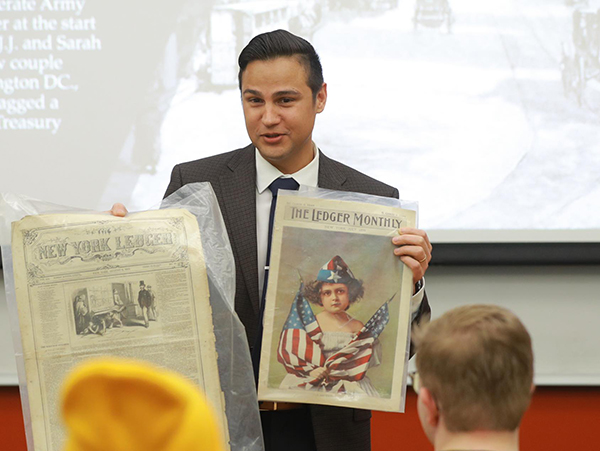A scholarly monograph by Dr. Ayendy Bonifacio, an assistant professor of English specializing in U.S. ethnic literary studies, was recently published by Edinburgh University Press.
Bonifacio’s book, “Paratextuality in Anglophone and Hispanophone Poems in the US Press, 1855-1901,” draws examples from more than 200 English-language and Spanish-language newspapers and periodicals published between January 1855 and October 1901 and argues that 19th-century newspaper poems are inherently paratextual.

A scholarly monograph by Dr. Ayendy Bonifacio, an assistant professor of English specializing in U.S. ethnic literary studies, was recently published by Edinburgh University Press.
“I wanted to provide methods for reading newspaper poems in their original context, next to news items, illustrations, ads and whatever else was on the page,” Bonifacio said. “I turned to French literary theorist Gérard Genette’s concept of the paratext (material surrounding a published text) because, I argue, it reveals more clearly and immediately that 19th-century newspaper poems were not self-enclosed aesthetic objects separate from public life.”
The genesis of the book was while Bonifacio was a graduate student at Ohio State University and working with his dissertation advisor on an archival project to digitize the early newspaper poems of the Ohio poet Sarah Morgan Bryan Piatt.
“I noticed the number of poems published in newspapers in both English and Spanish, and I wondered why scholars weren’t writing about this,” he said. “I learned that scholars of 19-century poetry argued for decades that the history of American poetry is often cast as a drive toward modernism. Consequently, the history of the newspaper poem had been relegated to the periphery of literary significance.
“I hope that readers of this book take away an impulse to broaden the capacity of our recovery work through intersectional and interdisciplinary approaches,” he added. “I invite scholars of 19th-century poetry to think beyond the realm of the English language when writing about the paratexts of newspaper poems. I encourage them to turn to the important interdisciplinary works of scholars who are already bridging connections between languages, publics and discourse, such as Dixa Ramírez, Lorgia García Peña, Rodrigo Lazo, Marlene Daut, Carmen Lamas, Kirsten Silva Gruesz, Jesse Alemán, Bernadine M. Hernández, Karen Roybal and many others whose work sheds light on the forgotten modernities of people whose perspectives are relegated to the margins of society.”